
As promised, I (Matt S.) have returned with part one of my coverage of a recent Age of Sigmar Meeting Engagement tournament that I helped to organize as well as participated in. You can read the intro to that event, here. This week I will focus on the tournament format along with a breakdown of the list that I ran at the event.
Tournament Format:
The format that we decided upon was five 90-minute rounds with Swiss pairings, and we guaranteed attendees that there would be no rematches (this got a bit dicey at the end due to having only eight players). We chose missions straight from the General’s Handbook 2019 and even used the tournament scoring sheet that was included (we did not require fully painted armies at the event, so we omitted that portion).
There are six meeting engagement missions provided in the handbook and the one that we chose to leave out was battleplan 2, Death Pass. Our reasoning was that it is the scenario least likely to force interaction between the players. (Death Pass uses only two static objectives, one in the center of each player’s territory, which can lead to castling.) I will cover the remaining scenarios in a bit more detail when I get into my individual matches next week.
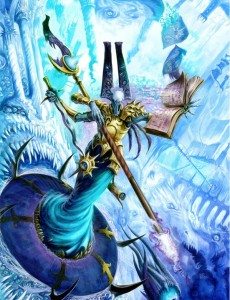
We also used the suggested terrain instructions; each player was required to bring two pieces of terrain following the limitations given in the meeting engagement rules. Players rolled off before the game and alternated placing terrain (following the placement rules) before sides were chosen. I felt that this provided an interesting mini game, at least in my matches, though I could see it being abused by players that bring terrain with a warscroll that provides a powerful buff.
Overall, players seemed content with playing five games in a single day, no one reported being too burned out by the end. There were also no complaints regarding the terrain rules, which surprised me a little bit. The only change I would make to the format going forward is to extend rounds to 1:45, which would mean starting the day an hour or so earlier.
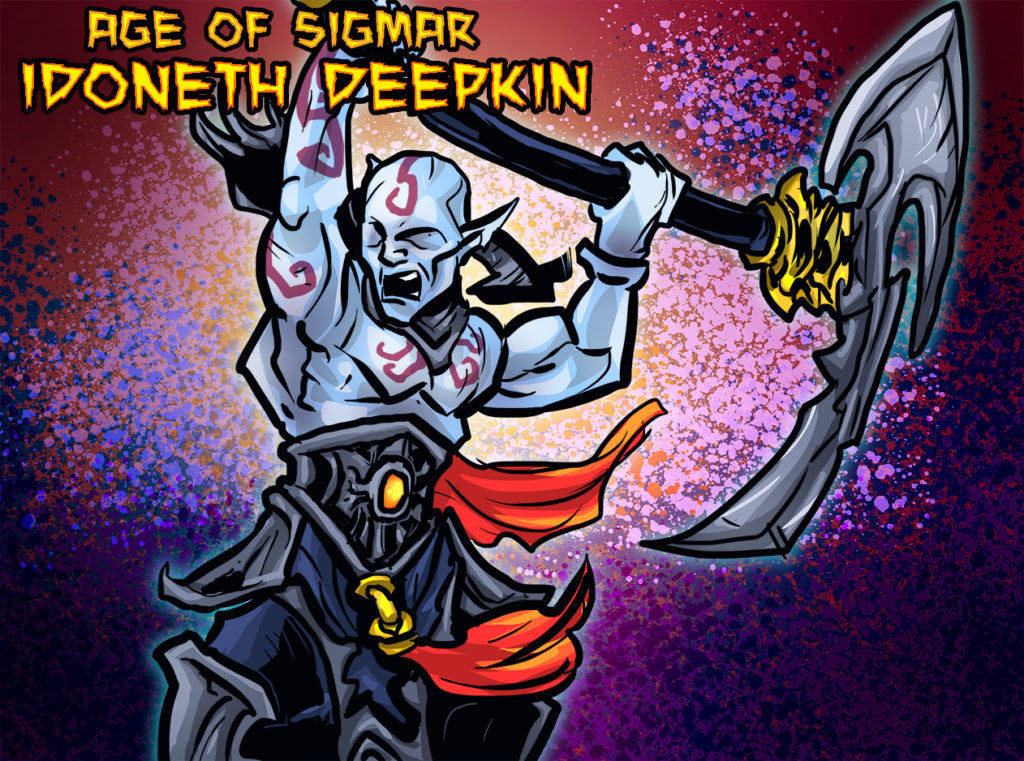
The List:
Faction: Idoneth Deepkin – I chose Deepkin due to the faction’s ability to field fast, hard hitting, flying units in the battleline slot. Speedy flying units, along with the ability to run and charge turn two, allowed me to threaten the entire board early on.
Enclave: Dhom-Hain – I knew that by fielding an eel-centric list I would lack bodies, so I needed to make the most of my hard hitting Akhelian units. I thought that the Dhom-Hain abilities to reroll hits of 1 on the charge and reroll wounds against monsters would help greatly in this regard.
Realm: Shyish (Death) – Chosen simply to make my Akhelian King as tanky as possible with the Ethereal Amulet artifact (the bearer ignores both positive and negative save modifiers).
Terrain: Though not technically part of my army, for my two pieces of terrain I took a large section of ruins and a Citadel Wood (along with my standard faction shipwrecks). I selected terrain with a large footprint to try to force opponents with faction specific terrain into bad positions (or to potentially be unable to place their terrain) due to the updated terrain placement restrictions.
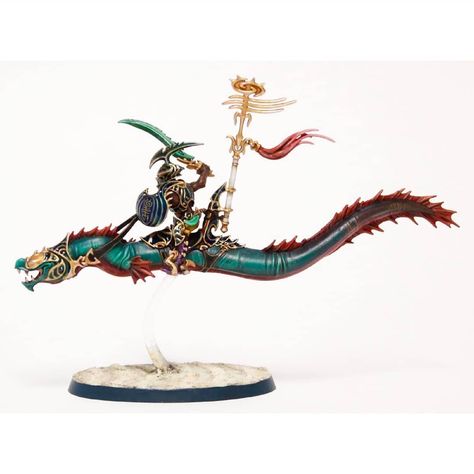
Spearhead:
1 unit of 3 Ishlaen Guard (defensive eels) – These were a last-minute addition to my list (I even built them the night before). Another allegiance ability of the Deepkin forces enemy units to target only the closest Deepkin unit in the shooting phase. I believed that taking a unit of non-rendable, 4+ save (3+ due to Deepkin counting as being in cover turn 1), four wound eels made me pretty unlikely to lose any models first turn. I also felt that with them on the board I could reliably give away first turn without giving up kill points and set myself up for a good counter charge if I managed a double turn.
1 Isharann Tidecaster – Also an eleventh-hour addition, I took the lone Deepkin wizard for two reasons. One was the spell Arcane Corrosion. Normally it is a spell that I would not bother with, but for meeting engagements it can allow me to steal the points for killing more wounds worth of models than my opponent turn one. It has a casting value of 6 and targets the closest enemy unit within 48” of the caster. It deals a number of mortal wounds dependent on the distance. 1 mortal from 0-12” all the way up to 4 morals from 36-48”, all with no line of sight restrictions. The second reason was that if there were no good targets for Arcane Corrosion, I could cast Mystic Shield on my eels to increase their survivability.
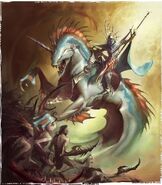
Main Body:
1 Akhelian King (General, Command Trait – Born From Agony, Artefact – Ethereal Amulet) – This unit was the most obvious choice going into the event, I had to take the king as my general in order to unlock eels as battleline choices. Additionally, as stated above, I wanted to make him difficult to kill, so I slapped on the amulet and gave him two additional wounds via the Born From Agony trait (for a total of nine wounds and a 3+ non-rendable save). I also equipped him with the polearm vice the sword due to its increased range, -2 rend, and flat 3 damage on the charge.
6 Akhelian Morrsarr Guard (melee eels) – At four wounds a piece, a 14” move, the ability to fly, an obscene amount of melee attacks, and a non-magic dependent ability to deal mortal wounds, the Morrsarr Guard have all of the tools necessary to succeed. This is especially true in a low point, shortened game.
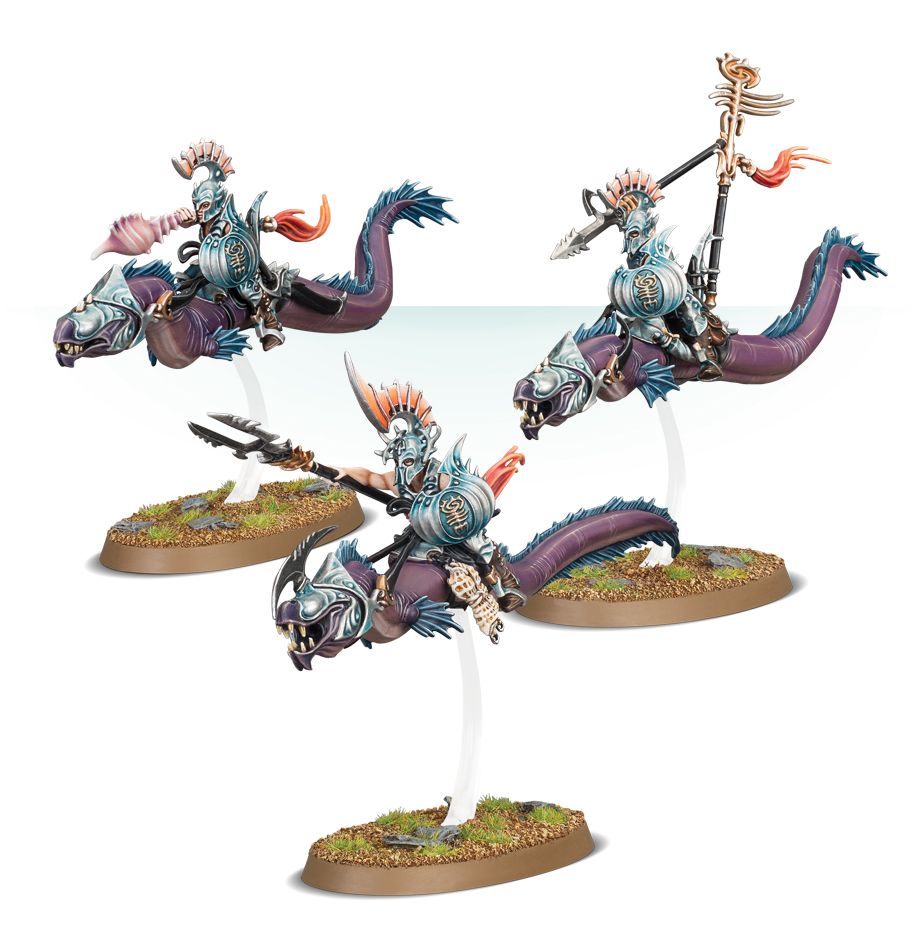
Rearguard:
3 Akhelian Morrsarr Guard – Added to give an additional melee and mortal wound threat where and when I needed it (see above).
Going into the tournament I felt pretty confident with my list, I believed that I had tools for dealing with most other factions, and I thought that the shortened board would make it difficult for opponents to try to hide from my hard-hitting units.
I did have concerns (that later proved valid) about my ability to deal with large monsters, especially if they were also equipped with the ethereal amulet (Specifically zombie dragons and Terrorgheists). I also knew that in a four round game I would not be able to wait around for turn three (when all Deepkin units get to fight at the beginning of the combat phase) to press the action. I was similarly anxious about high model count armies, especially from factions that can restore models or summon large units. My final concern was that I would be unable to place my shipwrecks depending on what type of terrain my opponents showed up to the table with (this was a lesser concern since I do not normally rely on the shipwrecks).
Up next I will look at how my list fared in the event, including a brief overview of the lists that I played against and the strategies that my opponents used when putting them together.
Has anyone tried out meeting engagements yet? Could I have done anything to improve my list?
Tune in next week for a report on all five of my games as well as results and final thoughts.
Matt is a Midwest based gamer that dabbles in many systems (most often 40K, AoS, and Infinity). He enjoys attending and organizing events and travels to as many tournaments as time allows.
And remember, Frontline Gaming sells gaming products at a discount, every day in their webcart!



